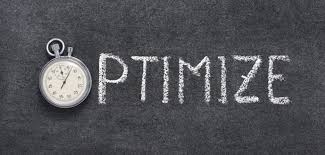Sitecore Optimization Checklist
- Posted in:
- Sitecore
Security
ID | Items |
| Protect Admins Pages
|
| Turn on custom Errors Update production web.config <customErrors mode="RemoteOnly" /> |
| Reset admin password. It would be embarrassing to go live with password "b" =) |
| Ensure replace develop license file before going live |
Performance
| Configure Keep-Alive <agent type="Sitecore.Tasks.UrlAgent" method="Run" interval="00:15:00"> <param desc="url">/sitecore/service/keepalive.aspx</param> <LogActivity>true</LogActivity> </agent> |
| Disable WebDAV Sitecore Recommendation Sitecore recommends disabling WebDAV on the production content delivery servers to reduce the number of log files being created. Also, Sitecore recommends disabling WebDAV on the content management servers if the WebDAV functionality is not being used. 1.Disable logging 2. <!--<appender name="WebDAVLogFileAppender" type="log4net.Appender.SitecoreLogFileAppender,3. Sitecore.Logging">4. <file value="$(dataFolder)/logs/WebDAV.log.{date}.txt" />5. <appendToFile value="true" />6. <layout type="log4net.Layout.PatternLayout">7. <conversionPattern value="%4t %d{ABSOLUTE} %-5p %m%n" />8. </layout>9. </appender>--> 10. 11.<!--<logger name="Sitecore.Diagnostics.WebDAV" additivity="false"> 12. <level value="INFO"/> 13. <appender-ref ref="WebDAVLogFileAppender"/> </logger>--> 14.Disable webserver 15.<!--<remove name="WebDAVModule" />--> 16. <!-- 17.<add name="WebDAVRoot" path="*" verb="OPTIONS,PROPFIND" modules="IsapiModule" 18.scriptProcessor="%windir%\Microsoft.NET\Framework\v2.0.50727\aspnet_isapi.dll" 19.resourceType="Unspecified" preCondition="classicMode,runtimeVersionv2.0,bitness32" /> 20. <add name="WebDAVRoot64" path="*" verb="OPTIONS,PROPFIND" modules="IsapiModule" 21.scriptProcessor="%windir%\Microsoft.NET\Framework64\v2.0.50727\aspnet_isapi.dll" 22.resourceType="Unspecified" preCondition="classicMode,runtimeVersionv2.0,bitness64" /> 23. <add verb="*" path="sitecore_webDAV.ashx" 24.type="Sitecore.Resources.Media.WebDAVMediaRequestHandler, Sitecore.Kernel" 25.name="Sitecore.WebDAVMediaRequestHandler" /> --> 26.Disable httphandler 27. <!-- 28. <add verb="*" path="sitecore_webDAV.ashx" 29.type="Sitecore.Resources.Media.WebDAVMediaRequestHandler, Sitecore.Kernel" /> --> |
| Disable Performance Counters Sitecore Recommandation Performance counters create a minor overhead and is recommended to be enabled only when running in troubleshooting mode <setting name="Counters.Enabled" value="false" /> |
| Disable Memory Monitor Sitecore Recommandation Sitecore recommends disabling the Memory Monitor in production environments, and only enabling it for troubleshooting memory related issues. <setting name="Counters.Enabled" value="false" /> <!--<hook type="Sitecore.Diagnostics.MemoryMonitorHook, Sitecore.Kernel"> <param desc="Threshold">800MB</param> <param desc="Check interval">00:00:05</param> <param desc="Minimum time between log entries">00:01:00</param> <ClearCaches>false</ClearCaches> <GarbageCollect>false</GarbageCollect> <AdjustLoadFactor>false</AdjustLoadFactor> </hook>--> |
| Ensure sufficient cache size |
SEO
Title Tag The <strong>title</strong> tag is required in all HTML documents and it defines the title of the document. This tag displays the page title in browsers toolbar and in the search-engine results (SERPs). It also provides a title for the page when it is added to favorites. A descriptive <strong>title</strong> tag is important in helping search engines determine the web page's relevancy for certain keywords. | |
| Meta Description The meta description tag is meant to be a short and accurate summary of your page content. This description can affect your search engine rankings and can also show up directly in search engine results (and affect whether or not the user clicks through to your site). |
| <h1> Headings Status This indicates if any H1 headings are used in your page. H1 headings are HTML tags than can help emphasize important topics and keywords within a page. |
| <h2> Headings Status This indicates if any H1 headings are used in your page. H1 headings are HTML tags than can help emphasize important topics and keywords within a page. |
Check Robots.txt Check if your website is using a robots.txt file. Search engines send out tiny programs called spiders or robots to search your site and bring information back so that your pages can be indexed in the search results and found by web users. If there are files and directories you do not want indexed by search engines, you can use the "robots.txt" file to define where the robots should not go. These files are very simple text files that are placed on the root folder of your website: www.yourwebsite.com/robots.txt. There are two important considerations when using "robots.txt": - the "robots.txt" file is a publicly available file, so anyone can see what sections of your server you don't want robots to use; - robots can ignore your "robots.txt", especially malware robots that scan the web for security vulnerabilities; | |
Check Sitemap a sitemap is an XML file that lists URLs for a site along with additional metadata about each URL (when it was last updated, how often it usually changes, and how important it is, relative to other URLs <g class="gr_ gr_9 gr-alert gr_gramm undefined Grammar multiReplace" id="9" data-gr-id="9">in</g> the site) so that search engines can more intelligently crawl the site. | |
Image Alt Test Check images on your webpage for required alt attributes. If an image cannot be displayed (wrong source, slow connection, etc), the alt attribute provides alternative information. Using keywords and human-readable captions in the alt attributes is a good SEO practice because search engines cannot really see the images. For images with a decorative role (bullets, round corners, etc) you are advised to use an empty alt or a CSS background image. |
